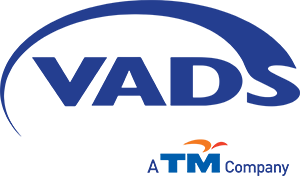Newsroom
- VADS
- Newsroom
- 5 KPIs for the Success of Outbound Contact Center Automation
5 KPIs for the Success of Outbound Contact Center Automation
27 April 2023

Among the many available sales channels, until now marketing techniques using direct calls such as outbound contact center automation are still widely used. Because you can connect directly with potential customers on a personal basis, offering products or surveys by calling is a very potent method to increase business income.
For those of you who currently have outbound contact center automation in an ongoing business, maybe you are confused about how to measure the performance of this team. As we know, agents in outbound call centers make many calls every day to achieve various goals that have been set.
In order for your investment to remain profitable and to be able to evaluate it as soon as possible to improve its performance, consider the following KPIs for outbound contact center automation.
Understand what an outbound contact center is

Before studying what KPIs should be used to measure outbound contact center performance, we need to first understand what an outbound contact center is. In simple terms, we can define this term as a division whose job is to make calls to potential customers to achieve a number of goals. Some of the achievements that a contact center agent must achieve are usually in the form of selling, providing customer service, or conducting research.
Not from random numbers, of course, calls to potential customers must be made through the call center. In another type, a contact center agent may be in charge of making calls, receiving calls, or both. In carrying out its work, there are several KPIs that must be met.
5 KPIs for outbound contact centers
KPI outbound contact center is an indicator used by companies to measure their performance. Whereas for a contact center agent, this KPI is usually used to measure the level of productivity, customer satisfaction, and often also sales. In order to know more about the explanation of the various KPIs, please see the full discussion below.
1. Number of calls per agent
As we know, a contact center agent can make a lot of calls during working hours. The number of calls made can be a KPI to measure productivity and its impact on the level of achievement of your business goals.
Typically, the indicators measured include calls while agents are talking to customers and calls that are not answered. Apart from evaluating the agent in question, you can also increase agent productivity by utilizing automatic call services provided by various platforms, such as PT VADS Indonesia (VADS) for example.
2. Average handling time (AHT)
This indicator measures the average time spent by agents on each call with potential buyers. The time measured is when the customer answers the call and continues until the agent or customer ends the call.
There are several cases that can occur with AHT, a contact center agent, both of which are equally good. Sometimes an agent who has a short average time is someone who is capable of effective communication so that he is able to make more calls. The opposite can also happen, it's possible that an agent has a high AHT, but still manages to achieve more targets. That is why contact center agent KPI calculations cannot be done haphazardly without measuring several other metrics.
3. Answer the success rate
When making calls to potential prospects, of course not all of them will be answered. Some calls may be rejected or completely ignored. It doesn't matter how many times an agent's calls are rejected, what matters is the percentage of calls answered by the customer. Typically, this KPI is used by a call center manager to measure how efficiently their agents are working. The data obtained can also be used as material for evaluation and to look back at the location of the problem that must be fixed. This is an important level that can lead to improvements in other call center metrics, such as conversion rate. These metrics can provide call center managers with useful information about the efficiency of their operations.
4. Average hold time
In a number of outbound contact center automation, it is common to use an automated system to receive and make calls. When a customer calls the call center, they are sometimes asked to wait to be connected with an agent. Well, that's the indicator that is measured. The average hold time is the length of time a customer spends waiting to connect with the call center. The smaller the number, the more satisfied the customer will be in using the services you offer.
5. Conversion rates
As important as some of the previously discussed KPIs, the conversion rate is an important metric to measure the performance of contact center agents in influencing potential customers to take action after making a telephone call. Usually in the form of sales, filling out surveys, and so on. The higher the conversion rate of an agent, the better the performance.
So, those are some of the outbound contact center automation KPIs that you need to pay attention to. If done right, outbound contact center automation can make your business a success. To maximize its potential, don't carelessly choose services for outbound contact center automation.
VADS is the best partner choice to produce maximum performance in outbound contact center automation. Experienced for more than a decade, VADS has been trusted by dozens of well-known brands such as LPDP, Tokopedia, Coca-Cola, and many more. Interested in trying? Call VADS right now!
Related News
30 June 2025
20 June 2025
19 June 2025
27 May 2025
02 May 2025
17 April 2025
14 March 2025
07 March 2025
28 February 2025
18 February 2025
14 February 2025
11 February 2025
07 February 2025
28 January 2025
24 January 2025
21 January 2025
14 January 2025
07 January 2025
02 January 2025
30 December 2024
27 December 2024
17 December 2024
13 December 2024
10 December 2024
06 December 2024
03 December 2024
29 November 2024
19 November 2024
14 November 2024
08 November 2024
05 November 2024
01 November 2024
31 October 2024
25 October 2024
22 October 2024
18 October 2024
16 October 2024
11 October 2024
09 October 2024
08 October 2024
07 October 2024
27 September 2024
24 September 2024
20 September 2024
13 September 2024
10 September 2024
10 September 2024
06 September 2024
04 September 2024
02 September 2024
02 September 2024
09 August 2024
05 August 2024
26 July 2024
23 July 2024
02 July 2024
25 June 2024
18 June 2024
14 June 2024
06 June 2024
31 May 2024
24 May 2024
26 April 2024
02 April 2024
08 March 2024
05 March 2024
01 March 2024
29 February 2024
27 February 2024
23 February 2024
20 February 2024
16 February 2024
13 February 2024
09 February 2024
06 February 2024
02 February 2024
30 January 2024
26 January 2024
23 January 2024
19 January 2024
17 January 2024
12 January 2024
09 January 2024
05 January 2024
04 January 2024
29 December 2023
26 December 2023
20 December 2023
13 December 2023
08 December 2023
05 December 2023
28 November 2023
23 November 2023
17 November 2023
14 November 2023
09 November 2023
08 November 2023
01 November 2023
24 October 2023
17 October 2023
17 October 2023
11 October 2023
10 October 2023
06 October 2023
04 October 2023
29 September 2023
27 September 2023
26 September 2023
22 September 2023
21 September 2023
15 September 2023
08 September 2023
01 September 2023
22 August 2023
18 August 2023
15 August 2023
15 August 2023
04 August 2023
26 July 2023
21 July 2023
04 July 2023
03 July 2023
30 June 2023
09 June 2023
01 June 2023
30 May 2023
26 May 2023
19 May 2023
17 May 2023
12 May 2023
04 April 2023
16 March 2023
09 March 2023
24 February 2023
22 February 2023
14 February 2023
13 February 2023
09 February 2023
31 January 2023
26 January 2023
23 January 2023
19 January 2023
12 January 2023
10 January 2023
06 December 2022
31 August 2022
17 June 2022
09 May 2022
20 April 2022
06 April 2022
01 April 2022
25 February 2022
23 February 2022
21 February 2022
18 February 2022
15 February 2022
11 February 2022
08 February 2022
07 February 2022
04 February 2022
02 February 2022
31 January 2022
17 January 2022
14 January 2022
07 January 2022
03 January 2022
28 December 2021
07 December 2021
01 November 2021
27 October 2021
25 October 2021
18 October 2021
15 October 2021
14 October 2021
21 September 2021
22 April 2021
15 April 2021
13 April 2021
08 April 2021
05 April 2021
26 March 2021
23 March 2021
18 March 2021
15 March 2021
12 March 2021
09 March 2021
04 March 2021
02 March 2021
26 February 2021
23 February 2021
19 February 2021
16 February 2021
11 February 2021
09 February 2021
04 February 2021
02 February 2021
26 January 2021
21 January 2021
19 January 2021
14 January 2021
12 January 2021
07 January 2021
05 January 2021
29 December 2020
17 December 2020
15 December 2020
10 December 2020
08 December 2020
04 December 2020
02 December 2020
18 November 2020
16 November 2020
13 November 2020
11 November 2020
10 November 2020
09 November 2020
06 November 2020
04 November 2020
28 October 2020
23 October 2020
12 October 2020
09 October 2020
06 October 2020
02 October 2020
30 September 2020
23 September 2020
19 September 2020
26 August 2020
22 July 2020
23 April 2020
16 April 2020
09 April 2020
26 March 2020
19 March 2020
12 March 2020
05 March 2020
27 February 2020
20 February 2020
13 February 2020
06 February 2020
